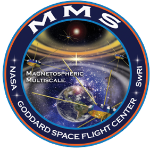Various mechanisms have been proposed to explain magnetosheath High Speed Jets (HSJs), such as bow shock ripples, solar wind discontinuities, foreshock transients, pressure pulses, nano dust clouds or shock reformation. It is however difficult to directly associate these mechanisms to HSJs due to the lack of simultaneous measurements at key locations, near the bow shock and both upstream and downstream of it. We will use a special Cluster campaign, where Cluster 1 was lagged 5 hours behind Cluster 2 and 8 hours behind Cluster 3/Cluster 4 (with separation distances ranging of 3.8 RE and 5.1 RE respectively), to obtain near-Earth solar wind measurements upstream of the bow shock, together with simultaneous measurements in the magnetosheath. The event of interest is first observed by ACE on 13 January 2019, around 07:30 UT, as a short 20-minute period of large IMF-Bx (with a cone angle around 140 deg.). This large IMF-Bx period is also observed, one hour later, by THEMIS B and C (ARTEMIS) and Geotail, which were at 60 and 25 RE from Earth on the dawn side. Cluster 1 and Cluster 2 just upstream of the bow shock, at 17 RE from Earth, observed also such large IMF-Bx period together with energetic ions reflected from the bow shock and Hot Flows Anomalies (HFAs) at the beginning and end of the large IMF-Bx interval. Finally, Cluster 3 and 4 and MMS1-4, a few RE from each other downstream of the shock, observed HSJs embedded in a turbulent magnetosheath for 15 minutes around 08:30 UT. In the first part of the interval, Cluster 3/4 and MMS1-4 observed five HSJs quasi-simultaneously and in the second part, Cluster 3/4 observed three HSJs and MMS only one. The end of the first part is associated with an increase of the magnetic field at MMS in the magnetosheath and upstream in the foreshock at Cluster and Geotail. ACE observed a discontinuity where IMF-By becomes dominant for a few minutes in the middle of the large IMF-Bx interval. These observations will be discussed as possible additional HFA or short, large-amplitude magnetic structure (SLAMS). Ground-based observations from all-sky imager at Yellow River Station and the magnetometer data from SuperMAG showed diffuse auroral brightening and Pc5 ULF waves during the observations of magnetosheath HSJs.

 PDF version
PDF version
